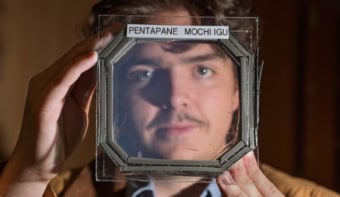
A new type of photovoltaic device can generate useful amounts of electrical power from sources that radiate heat at moderate temperatures. So say researchers at Sandia National Laboratories in the US, who succeeded in recovering power densities between 27–61 μW/cm2 from thermal sources at 250–400°C. The new energy-harvesting technology might be used on waste heat from nuclear power plants or chemical manufacturing facilities. According to Paul Davids, who led the research effort, it could also aid the development of compact thermal power supplies for deep space probes and other remote applications.
Standard photovoltaic devices (such as solar photovoltaic cells) work by absorbing incident radiation across the bandgap of a semiconducting device. These devices usually feature p-n junctions designed so that light is absorbed within a region of the device known as the depletion width. When this region absorbs a photon, the resulting electron-hole pair is spatially separated by the region’s internal electric field, and this separation of charge induces an open circuit voltage across the device.
Devices of this type work well for energetic photons in the visible range of the spectrum – including those produced by our Sun, which has an effective black-body temperature of around 6000 °C. Objects at temperatures between 100 to 400 °C, however, emit light mainly in the thermal infrared part of the electromagnetic spectrum, with wavelengths between 7-12 μm. The waste heat radiated from many modern industrial processes falls into this range, so putting even a small percentage of it to good use could significantly reduce energy consumption.
Photon-assisted tunnelling
The problem, Davids says, is that as the photons’ energy decreases and approaches the thermal energy of the converter, standard photovoltaic converters become exceedingly inefficient. This drawback led his team to seek alternative ways of generating current.
“In our device, the photocurrent produced by the electron-hole pairs is not from photon absorption but from photon-assisted tunnelling,” he explains. “This tunnelling acts to shuttle charge into a periodic array of wells formed by interdigitated p-n junctions under our subwavelength metallic grating.”
The photon-assisted tunnelling current is driven by infrared radiation confined in the tunnel barrier of the device, which the researchers fabricated from a silicon dioxide layer just 3-4 nm thick. This structure provides a predominantly one-way path for electrons to be separated from holes, leading to a large open circuit voltage across the device and efficient conversion of infrared radiation into electrical power.
Application areas
The devices developed by Davids and colleagues can be made using standard CMOS processes routinely employed in manufacturing advanced semiconductor chips. This means they could be fabricated in high volumes. In the nearer term, the researchers say they would like to use their energy-harvesting technology to develop power supplies for deep space probes, which cannot use photovoltaic cells because they are too far from the Sun. The Sandia devices could also provide enough power to be used as a primary source of electrical power generation, or as a supplement to standard thermoelectric methods, Davids says.

The search for silicon’s successor
Another potential application lies in recovering electrical power from large cloud-computing data centres, which dissipate a lot of heat and must be cooled continuously to keep processors below 120 °C. “If we can recover electrical power from this waste heat, we could improve the energy efficiency of this growing part of the energy consumption market,” Davids tells Physics World.
The researchers, who report their work in Science, say they are now focusing on enhancing the conversion efficiency of their devices and simplifying their fabrication process. “As we continue to improve the efficiency of our technology and scale up to larger areas, we are confident that many more application areas will emerge,” Davids says. “There are also several exciting connections with recent advances in passive photonic cooling and structured light emitters, which when combined with our technology could open up other untapped avenues for power creation and reclamation.”



